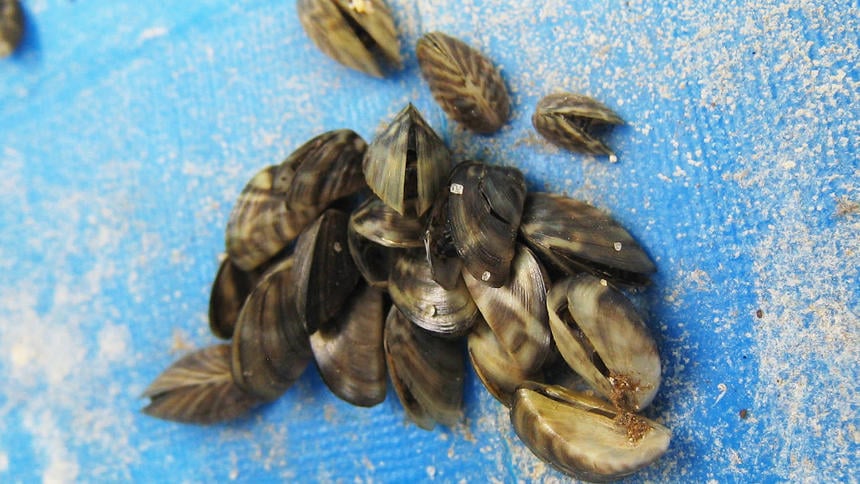Many of our area lakes have been infested with zebra mussels over the last several years. Pelican Lake was one of the first lakes to be identified and has been followed by Sallie, Melissa, Big Detroit, Cormorant, Lida, Franklin, and Otter Tail. There are more, but these have typically been some of the most popular and pressured fishing lakes.
The first change that is noticed after the first year or two of an infestation is in the clarity of the water. Zebra mussels will make stained waters clear, and clear waters “in” clear. The second obvious change that follows is in the depth and thickness of the weed growth. Lakes like Pelican, that had a weed line out to 18 feet, now have weed growth in areas out to as deep as 26 feet.
The most noticeable change that occurs, that is also the most talked about, is the change in location of the schools of fish, especially the walleyes.
Zebra mussels filter the water and strain out some of the plankton. This is one of the biggest concerns as the baitfish and young gamefish rely on the plankton as a food source for their development. The population of zebras explodes when first introduced and then level off, finding some kind of balance to maintain themselves in the system. They also dominate other natural mussels and clams. They attach themselves to weeds, rocks, clams, docks and anything that has been in the water for an extended period of time, including boat hulls and props. They are very sharp and can cut the feet of barefoot walkers in shallow areas.
They are a nuisance in the least, and we don’t have any strategy that works at this time to eradicate them.
Fish populations in the infested lakes remain very good, including walleye. It takes some time and effort to figure out the transition the fish are making to adjust to the new changes in their ecosystem. Fish will still be where their food is, and that is always a good clue for adjusting to getting your new honey holes. Walleyes will still be shallow in the early season, even in the super clear water, because that is where the minnows they eat are located.
On Pelican and Otter Tail, you can see the bottom in over 12 feet of water on a clear calm water day, and walleye locations can even be found by sight fishing them. It is easy to see the cabbage weeds and see the fish relating to those cabbage weeds in the early season.
As we transition into summer patterns like we are starting now with the mayfly hatch, walleyes will transition to the deeper water of shoreline breaks and out to deeper mid-lake structure. They can be several feet deeper than you have been used to fishing them in the lakes with zebra mussel infestations. Many walleyes will stay in shallow weeds all summer, even in the clear water, especially if musky are present in the system.
Trust your electronics when looking in the deep water. An underwater camera will also show you the fish in the deeper water because they will work deep due to the increased light levels to deeper water. The fall deep water locations that you used to find walleyes in 24-28 feet of water, maybe holding them now in 30-35 feet of water. Adapt, adjust, and change of our approach is the only way to deal with the changes that have occurred because of AIS.
Credit: www.dl-online.com

